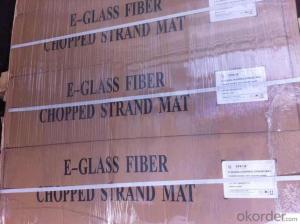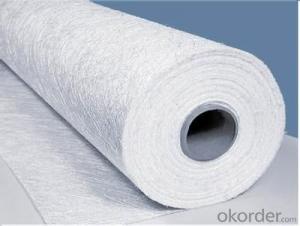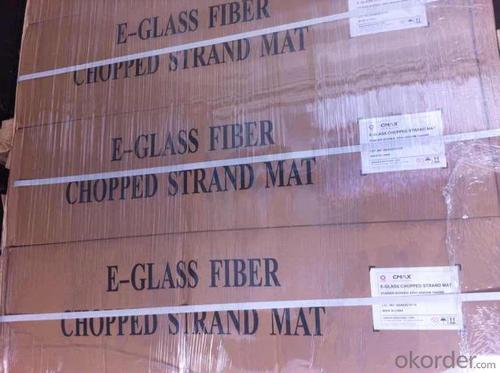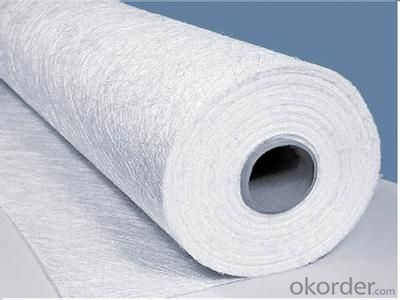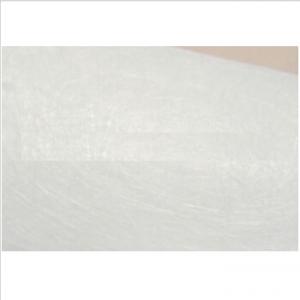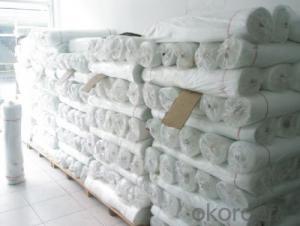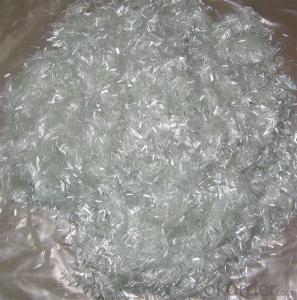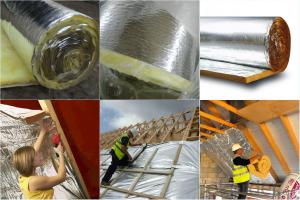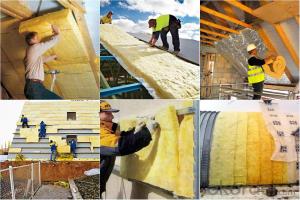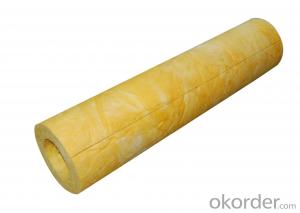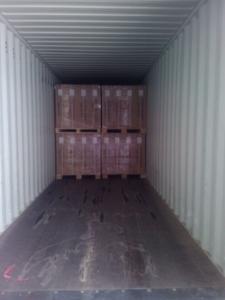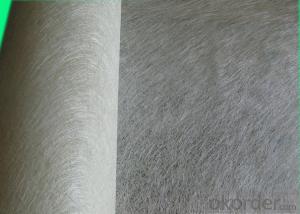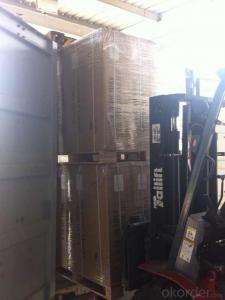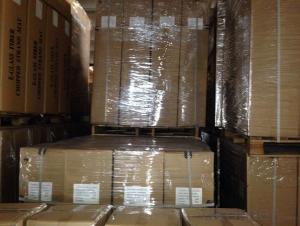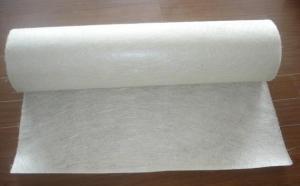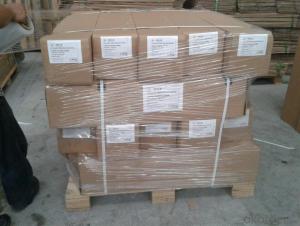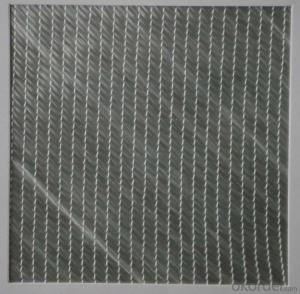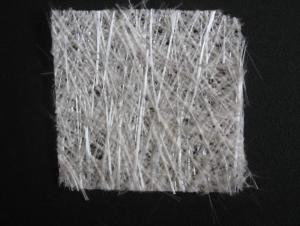Fiberglass Mat Tissue E Glass Emulsion Chopped Strand Mat for Filament Winding
- Loading Port:
- Shanghai
- Payment Terms:
- TT OR LC
- Min Order Qty:
- 10000 kg
- Supply Capability:
- 200000 kg/month
OKorder Service Pledge
OKorder Financial Service
You Might Also Like
1.Brief Introduction E-glass emulsion chopped strand mat for filament winding is made of randomly distributed chopped strands held tighter by a emulsion binder. It is compatible with UP, VE, EP resins.
Additional demands on wet-out and decomposition time may be available upon request.
2.Product Features
Fast breakdown in styrene
High tensile strength, allowing for use in hand lay-up process to produce large-area parts
Superior acid corrosion resistance
3.Product Specifications
Property | Area Weight | Moisture Content | Size Content | Breakage Strength | Width |
(%) | (%) | (%) | (N) | (mm) | |
Mathods | IS03374 | ISO3344 | ISO1887 | ISO3342 | |
EMC80E | ±7.5 | ≤0.20 | 8-12 | ≥40 | 50-3300 |
EMC100E | ≥40 | ||||
EMC120E | ≥50 | ||||
EMC150E | 4-8 | ≥50 | |||
EMC180E | ≥60 | ||||
EMC200E | ≥60 | ||||
EMC225E | ≥60 | ||||
EMC300E | 3-4 | ≥90 | |||
EMC450E | ≥120 | ||||
EMC600E | ≥150 | ||||
EMC900E | ≥200 |
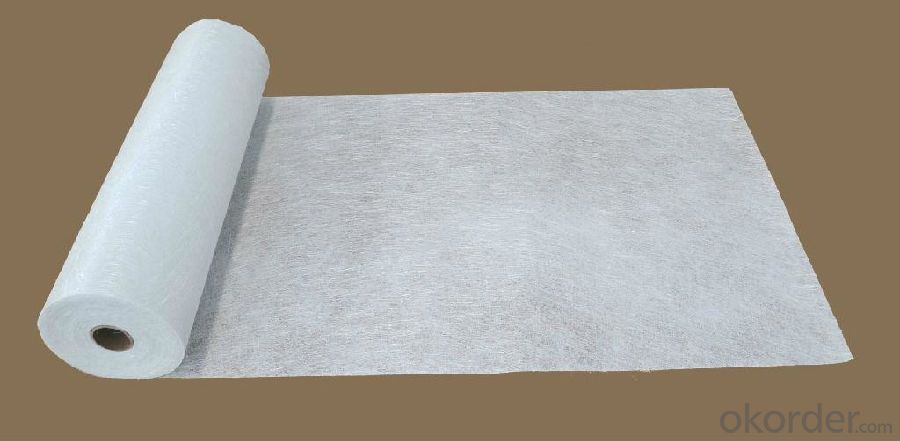 4.FAQ
4.FAQ
Packaging:
Each Chopped Strand Mat is wound onto a paper tube which has an inside diameter of 76mm and the mat roll has a diameter of 275mm. The mat roll is wrapped up with plastic film,and then packed in a cardboard box or wrapped up with kraft paper. The rolls can be vertically or horizontally placed. For transportation, the rolls can be loaded into a cantainer directly or on pallets.
Delivery and Payment Term
The products will be ready in 20 days after getting the advance payment or acceptable original l/c.The payment term can be 30% t/t in advance,70% t/t againest b/l copy or l/c.
- Q: How does fiberglass mat tissue perform in terms of acoustic insulation?
- Fiberglass mat tissue performs well in terms of acoustic insulation. Its dense structure and ability to trap air make it an effective sound absorber, reducing the transmission of sound waves and minimizing noise pollution.
- Q: What is the typical width of fiberglass mat tissue rolls?
- The typical width of fiberglass mat tissue rolls is around 1 meter or 3 feet.
- Q: Can fiberglass mat tissue be used for HVAC insulation?
- No, fiberglass mat tissue is not suitable for HVAC insulation. It is primarily used for reinforcing materials in construction and composite manufacturing. HVAC insulation requires specific materials with thermal resistance properties to effectively control temperature and reduce energy loss.
- Q: Does fiberglass mat tissue provide good acoustical performance?
- Good acoustical performance is provided by fiberglass mat tissue. This material, composed of fine glass fibers, effectively absorbs sound waves and reduces echo and reverberation in a space. It possesses outstanding sound absorption properties, making it suitable for use in construction, automotive, and aerospace industries. The ability of fiberglass mat tissue to dampen sound and enhance acoustics makes it a favored option for soundproofing walls, ceilings, and floors in buildings. Moreover, its lightweight nature and ease of installation further contribute to its appeal for acoustical applications.
- Q: Is fiberglass mat tissue suitable for aerospace applications?
- Yes, fiberglass mat tissue is suitable for aerospace applications. Fiberglass mat tissue is a lightweight material that exhibits excellent strength and durability, making it ideal for use in aerospace applications where weight reduction and structural integrity are critical. It is commonly used as a reinforcement material in composite structures and aerospace components such as wings, fuselages, and engine components. Fiberglass mat tissue provides high impact resistance, good thermal stability, and low moisture absorption, which are essential properties for withstanding the harsh conditions and extreme temperatures experienced in aerospace environments. Additionally, fiberglass mat tissue offers good electrical insulation properties, making it suitable for applications that require effective electrical shielding. Overall, fiberglass mat tissue is a reliable and widely used material in the aerospace industry due to its exceptional mechanical properties, lightweight nature, and ability to withstand the demanding conditions of aerospace applications.
- Q: Glass fiber cotton or ceramic fiber paper insulation?
- Glass fiber cotton bar, there are more air inside, the effect may be better
- Q: Can fiberglass mat tissue be used for making lightweight furniture?
- Fiberglass mat tissue has the capability to create lightweight furniture. This material is composed of glass fibers bonded with resin, resulting in a thin and light substance. Its exceptional strength-to-weight ratio has made it widely used in different industries such as automotive, aerospace, and construction. In furniture production, fiberglass mat tissue can be layered and shaped into various forms, providing both structural support and rigidity while keeping the weight of the furniture low. This makes it an excellent choice for crafting lightweight furniture pieces that are easy to move and transport. Furthermore, fiberglass mat tissue exhibits impressive durability and resistance to moisture, chemicals, and heat, making it suitable for indoor and outdoor furniture applications. Its versatility empowers furniture designers and manufacturers to create innovative and distinctive designs while maintaining the desired lightweight characteristics. However, it is crucial to consider that the quality and performance of the final product also rely on the overall design, construction, and other materials used in conjunction with fiberglass mat tissue. To ensure the furniture's longevity, stability, and safety, proper engineering and manufacturing techniques should be applied.
- Q: Can fiberglass mat tissue be used in marine applications?
- Certainly! Fiberglass mat tissue finds its utility in the realm of marine applications. It is a lightweight and flexible substance that is extensively employed in the construction and repair of boats. Its commendable strength and durability render it suitable for marine environments that entail exposure to water, salt, and other severe conditions. It is frequently employed as a reinforcement layer in the fabrication of boat hulls, decks, and other structural constituents. Its incorporation augments the strength and rigidity of composite materials employed in marine applications, thus bolstering their overall performance and lifespan. Furthermore, fiberglass mat tissue exhibits resistance to corrosion and possesses favorable water resistance properties, rendering it an apt choice for marine applications.
- Q: Can fiberglass mat tissue be used in corrosive environments?
- No, fiberglass mat tissue is not suitable for use in corrosive environments as it is not resistant to corrosion.
- Q: Is fiberglass mat tissue compatible with different types of resins?
- Yes, fiberglass mat tissue is compatible with different types of resins. It is commonly used in the construction industry as a reinforcement material for various resin systems, including polyester, epoxy, and vinyl ester resins. The compatibility of fiberglass mat tissue with different resins makes it versatile and suitable for a wide range of applications.
Send your message to us
Fiberglass Mat Tissue E Glass Emulsion Chopped Strand Mat for Filament Winding
- Loading Port:
- Shanghai
- Payment Terms:
- TT OR LC
- Min Order Qty:
- 10000 kg
- Supply Capability:
- 200000 kg/month
OKorder Service Pledge
OKorder Financial Service
Similar products
Hot products
Hot Searches
Related keywords
